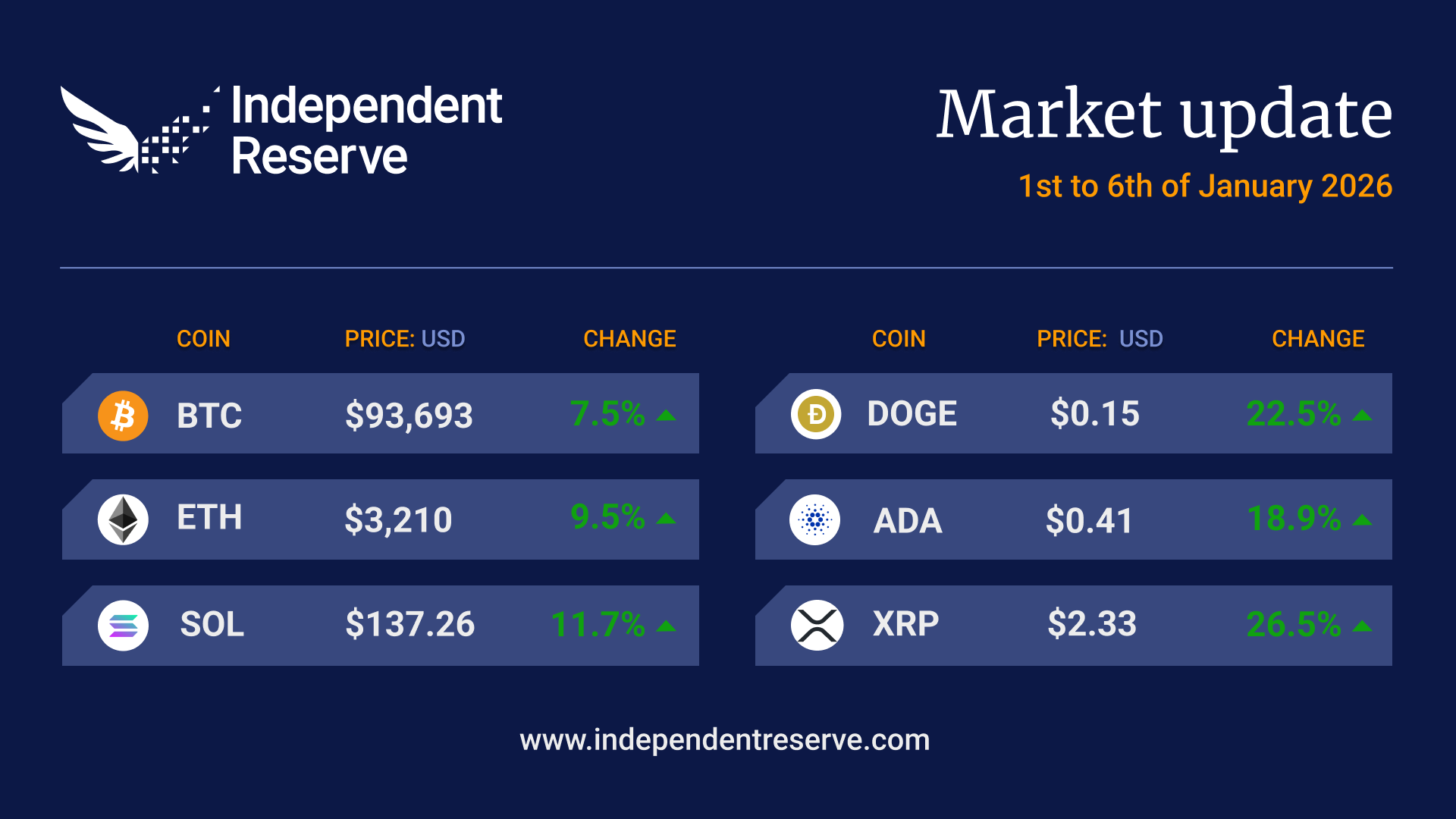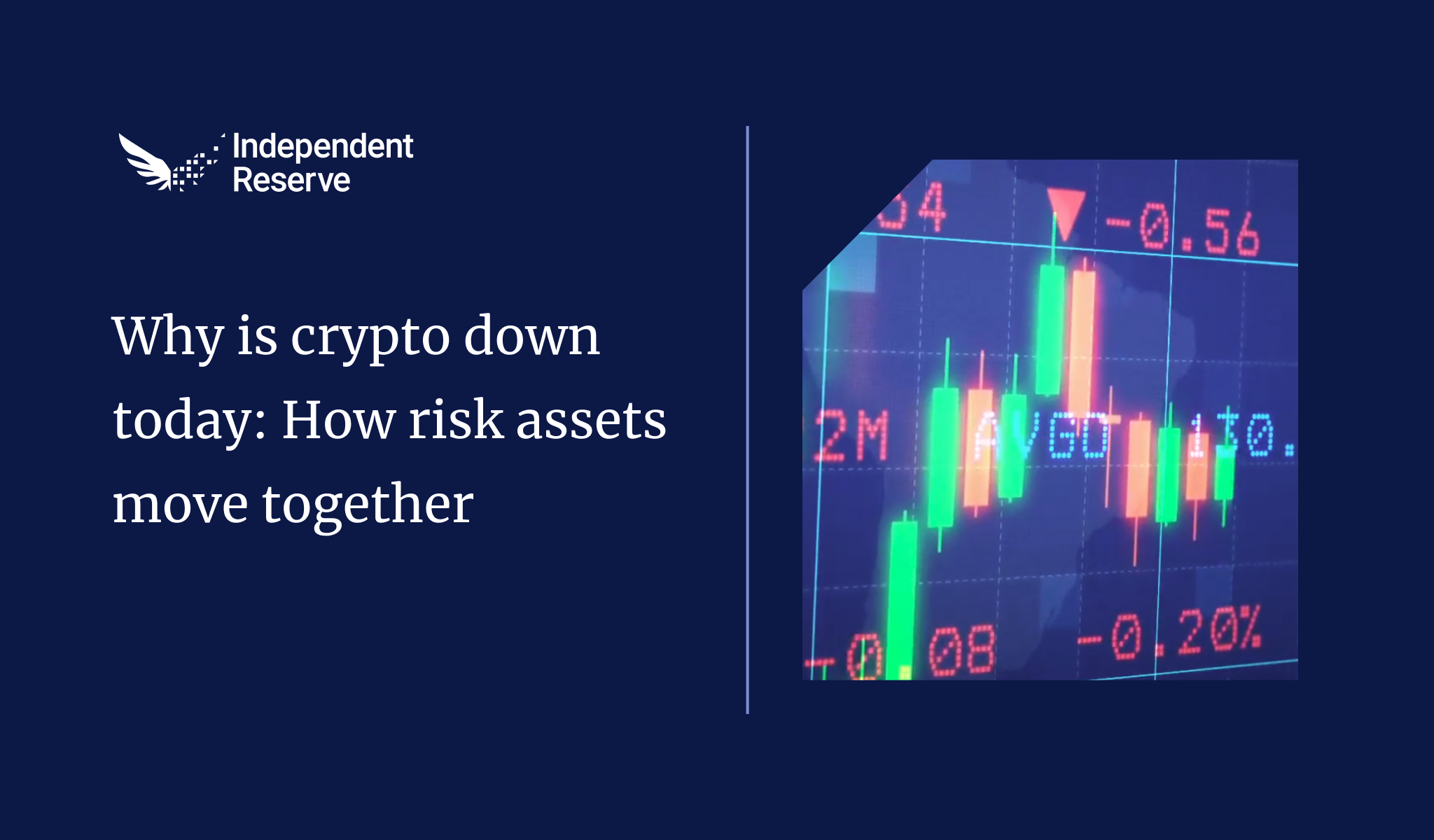In markets
A long-held fantasy of Bitcoiners appears to be coming true (at least in a small way), with Bitcoin surging in the midst of fears over the collapse of the banking sector. Bitcoin is up 40% since the crisis began and reclaimed the US$28K (A$41.7K) mark this week for the first time since June 2022. The Crypto Fear and Greed Index has topped 66 (Greed), the highest level since November 2021 (Bitcoin’s ATH). The crisis has lessened the chances of further steep interest rate rises in the US, with the market tipping a 25-basis point rise this week. What some characterise as backdoor money printing from the Fed’s Bank Term Funding Program (BTFP) may also be having an impact. The overall crypto market cap is A$1.74T (US$1.17 trillion). Bitcoin surged 16.3% this week and is currently trading at A$41,760 (US$27,980), while Ethereum was up 4.3% to US$2,620 (US$1,755). Bitcoin is leaving the other coins in the dust, with Ripple flat, Cardano down 3.5%, Polygon (-6.3%) and Dogecoin (-1.9%). Solana increased by 10%.

From the OTC desk
Right here and now it feels as though we are in the eye of the credit storm. A storm that started in the US, with the fall of Silvergate, Signature and Silicon Valley Banks, and one which then spread to Europe with the forced takeover of Credit Suisse by UBS. Coordinated central bank US dollar liquidity has been opened via the standing US dollar swap line arrangements (between the Bank of Canada, Bank of England, Bank of Japan, European Central Bank, Swiss National Bank and the Federal Reserve). Despite this facility being made available, there remains deposit flight concern for the US regional banks – First Republic Bank in particular.
This week, all eyes will be on the US Federal Open Market Committee (FOMC) and their decision-making process for monetary policy and quantitative tightening. Currently, the FOMC has stubbornly high inflation and faltering financial stability. While the market remains circa 74% priced for a 25bps increase to the Federal Funds rate, this decision is certainly no gimme, and is now right at the pointy end of policy making. The FOMC announcement is scheduled for 5:00am on Thursday morning (AEDT), with a press conference with Chair Jerome Powell to be held at 5:30am. Watch this space.
Of fleeting consequence for the financial markets, last week we received US inflation data for February. While headline inflation moved down to 6% from 6.4% in January, core inflation has remained slow to adjust, printing on market consensus at 5.5% (5.6% prior). There remains some confusion as to the merits of inflation, with US Producer Price Inflation (MoM) falling by 0.10% in February. Time will ultimately tell which data points are statistical anomalies. You can expect that the FOMC has the best underlying data source for interpretation of sustained inflation in the US.
In cryptocurrencies, the optics of the Federal Reserve’s balance sheet expansion (due to the introduction of the Bank Term Funding Program (BTFP)) has caused a flight to quality – in crypto’s case a flight to BTC. Historically, BTC has been a Federal Reserve balance sheet hedge (I would argue above anything else). This was highlighted again this week, with very little customer interest in alts, where interest has been subdued.
USD banking challenges have remained for cryptocurrency providers, particularly in the Asia time zone. This has caused a noticeable pricing difference in the wholesale market for USDT and USDC during the Asian trading session, relative to the US/European session. We continue to see a high volume of USDC and USDT being traded OTC.
In headlines
Banking sector wobbles
This week, a University of Southern California paper modelled a scenario in which customers withdrew half of their uninsured deposits in bank runs and determined that 186 banks would be forced to realise losses that would render them bankrupt. The concerns shifted to PacWest Bankcorp and the First Republic Bank, while in Europe, Swiss banking giant Credit Suisse was kept afloat with a hastily brokered US$2 billion (A$2.98B) deal with UBS. A coalition of 110 US banks asked for Federal Deposit Insurance Coverage for all deposits for two years (funded by themselves with a larger insurance premium). The inability of smaller banks to deal with bank runs explains why the Fed was so quick to step in and guarantee all deposits at Silvergate and Silicon Valley Bank. According to Bianco Research, the loans have increased the Fed’s balance sheet by US$300 billion (A$446B): “In other words, in just one week, the Fed reversed roughly half of all the QT (quantitative tightening) it accomplished over the past year.” Former Bitmex CEO Arthur Hayes argues the BTFP equates to “infinite money printing” and argues that “The ensuing Bitcoin rally will be one of the most hated ever”, given the number of people blaming crypto for the banking crisis in the first place. Bitcoin Magazine, however, cautions the changes in the Fed’s balance sheet are “a lot more nuanced” than the ‘money printer goes brr’ meme.
Bitcoin is an inflation hedge again
Podcaster Anthony Pompliano has revived the ‘Bitcoin is an inflation hedge’ narrative, arguing pundits got it wrong with Bitcoin’s price fall last year. He said markets are forward-looking and took action because the Fed indicated it would bring inflation down. “Many people incorrectly pointed out that Bitcoin’s crash in 2022 proved it wasn’t an inflation hedge. That couldn’t be more inaccurate. You would expect inflation hedge assets to fall in price when the Fed is bringing down inflation. Surprise! That is what happened.” He argued that Bitcoin is getting more popular because the Fed’s efforts to rein in inflation by hiking rates up 4.5% and reducing the balance sheet have failed. “The market is forward-looking and it knows that inflation is going to be higher, and last longer than previously believed. The Fed has no choice. Investors need an inflation hedge again. Bitcoin is the big winner.”
Million-dollar Bitcoin bet
Former Coinbase Chief Technology Officer Balaji Srinivasa was the talk of Twitter over the weekend, thanks to his heroic bet that one bitcoin will be worth US$1 million (A$1.49M) within 90 days. He argues the banking crisis will be the moment “the world redenominates on Bitcoin as digital gold.” He had no shortage of takers for the bet (which could be hedged by buying a single Bitcoin). Few people think there’s much chance of a 3,600% increase in that timeframe, which would outpace the 2020-2022 bull market (a 547% rise) and the 2017 rally (a 1,105% rise). Crypto analyst Ali estimates that more than $18 trillion (A$26.8T) would need to be injected into Bitcoin markets for the price to hit $1M per Bitcoin. Real Vision CEO Raoul Pal says the bet is just a stunt: “He’s got zero point zero chance of being right, but what he’s doing is spending a million bucks, two million bucks, on marketing what is an important concept.” Pal believes the US$50K (A$74.4K) mark is more likely this year.
Best performing asset
Goldman Sachs put out a report this week highlighting that Bitcoin has been the best-performing asset in the year to date, gaining 51% since January 1, ahead of information technology (+16%), communication services (+15%), consumer discretionary (+11%), Russell 1000 Growth (+10%), gold (+4%), and the S&P 500 (+4%). In terms of risk-adjusted returns, based on the Sharpe Ratio, Bitcoin has a leading score of 1.9, higher again than information technology (1.5), Nasdaq (1.4), and healthcare (-1.1). Meanwhile, Timothy Peterson, manager of Cane Macro, tweeted a graph showing that Bitcoin addresses with a balance greater than zero have been steadily growing despite the boom-bust cycle. “The true measure of #Bitcoin adoption is the number of users who remain *after* a major price decline. That number has been increasing since inception at a fairly steady rate. It took 10 years to reach the first 20 million and 5 to reach the next 20mil. 20 mil more will be added just 2 years from now.”
Microsoft Edge browser gets crypto wallet
Microsoft has been testing out a crypto browser to ship as standard with its Edge browser, which itself ships standard with Windows. Leaked screenshots show an EVM-compatible wallet, DApp explorer, NFT markets, news feed and the ability to buy and sell crypto. The browser wallet appears similar to Metamask in that it’s “non-custodial” and Microsoft will “not have access to your password and recovery key.”
Singapore crypto firm heads to Hong Kong
Hong Kong’s pivot towards becoming a regional crypto hub has attracted crypto market data provider Kaiko from Singapore. Kaiko feeds data to outfits like the Deutsche Boerse and ICE Global Network. “With all of the recent changes and initiatives from the Hong Kong regulatory bodies, we realised that this is clearly where we have to be, where the capital is going to flow in, and where we are seeing a lot of attractiveness when it comes to hedge funds, investors and asset managers,” chief executive officer Ambre Soubira said. Hong Kong’s Secretary for Financial Services Christian Hui said recently that 80 crypto firms were in the process of making a beeline for the territory. Most were from China, but some companies were from Canada, the EU, Singapore, the UK and the US.
Until next week Happy Trading!


